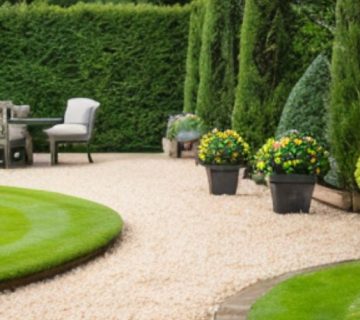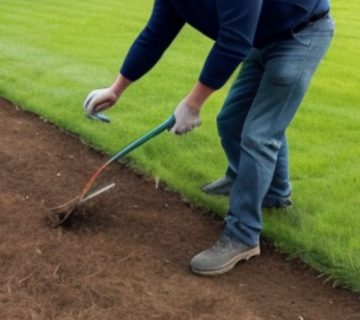
- Pruning shears
- Hand saw
- Hedge trimmers
- Loppers
- Rake
- Shovel
- Garden waste bags or bins
How to Start Clearing
Once you’ve assessed your garden and gathered your tools and supplies. It’s time to start clearing. Here’s a step-by-step guide to clearing your garden efficiently: Start by pruning overgrown or unwanted plants, shrubs, and trees. Use pruning shears or hand saws for smaller plants and hedge trimmers or loppers for larger plants. Make sure to prune evenly and carefully to avoid damaging the plants. Remove any dead or diseased plants and shrubs. If they’re small, use your hands to pull them out. If they’re large, use a shovel to dig them out. Rake up any leaves, debris, and other unwanted materials. Use a rake to gather them up into a pile, and then use a shovel to put them into garden waste bags or bins. Remove any broken pots or other debris from the garden. You can either discard them or recycle them if possible. Cut back any overgrown or tangled branches that may be obstructing walkways or paths. Use pruning shears or a hand saw for smaller branches and loppers for larger ones. Once you’ve cleared all the unwanted debris and plants, use a rake to even out the soil and prepare it for new plants or seeds.
Tips for A More Sustainable and Eco-Friendly Garden Clearing
Here are some additional tips for a more sustainable and eco-friendly garden clearing: Use electric or manual garden tools instead of gas-powered ones to reduce air and noise pollution. Donate or sell any unwanted plants, pots, or garden tools to a local gardening community or a charity organization. Use natural and organic methods for pest control and fertilization instead of harmful chemicals that can harm the environment and wildlife. Plant native species that are adapted to the local climate and require less water and maintenance. By implementing these sustainable practices. You can not only clear your garden efficiently but also contribute to a healthier and eco-friendlier environment. Remember, every small action counts, and your garden can make a positive impact on the planet.
Garden Clearance Cost: Hand removal
For small or medium-sized gardens, hand removal can be an effective method for clearing weeds, plants, and debris. This method involves manually pulling up unwanted plants and removing debris by hand. It’s a labour-intensive process. But it’s eco-friendly and doesn’t require any machinery or chemicals. Mulching: Mulching is the process of spreading organic matter over the soil surface to help retain moisture, suppress weed growth, and add nutrients to the soil. By using a mulching machine, you can chop up garden waste into small pieces and spread it over your garden as mulch. This method not only clears your garden but also improves soil health and fertility. Biomass energy production: Some garden clearance services use garden waste to produce biomass energy. Biomass energy is a renewable energy source that involves burning organic matter (such as wood chips, grass, and garden waste) to generate heat and electricity. This method not only clears your garden but also produces clean energy that can be used to power homes and businesses.




